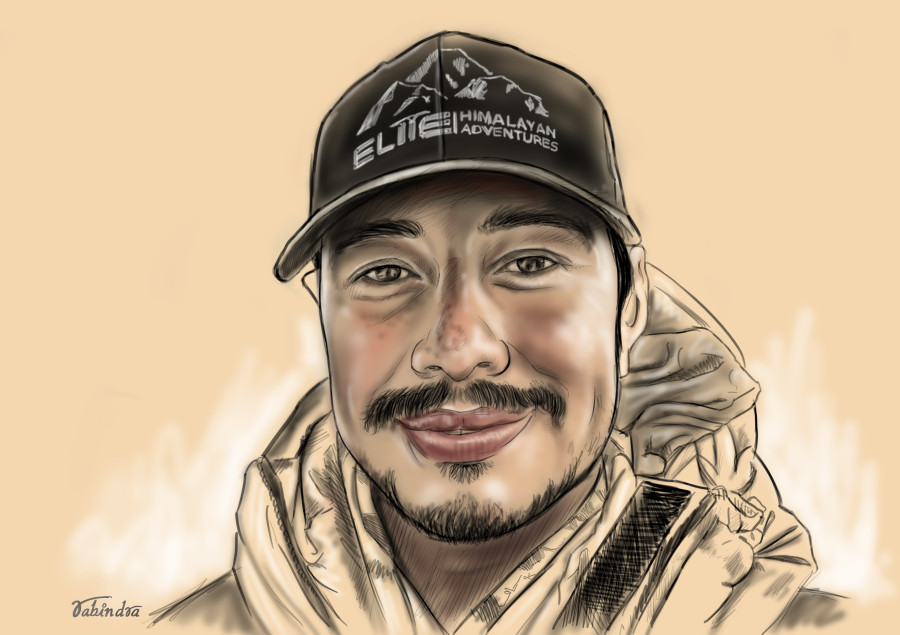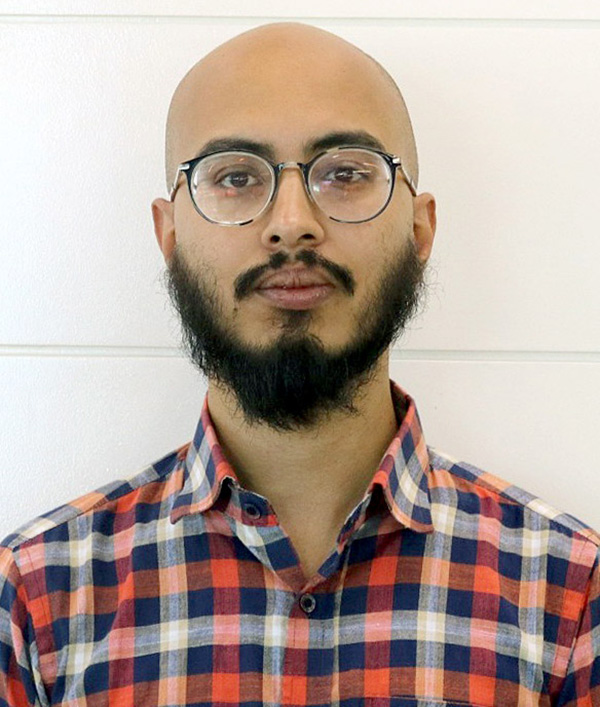Brunch with the Post
Nirmal Purja: Never let anyone tell you that you can’t do something
The former British Special Forces soldier on his mission to climb all 14 of the world’s highest peaks in the shortest span of time, and his Everest ‘traffic jam’ photo that went viral.
Pranaya SJB Rana
Nirmal ‘Nims’ Purja, MBE, might just be a superhuman. In May, Purja climbed Everest (8,848 metres), descended to South Col and climbed adjoining Lhotse (8,516 metres), then flew to Makalu base camp and climbed that peak (8,481 metres) too—all in 48 hours. He broke his own previous world record for the same three peaks, taking five days in 2017.
Climbing three 8,000 metres back-to-back is a feat in itself but to do it in less than a week is almost impossible. But not for Purja, who is on a seemingly impossible mission—to climb all 14 of the world’s highest peaks in the shortest span of time. Legendary Polish climber Jerzy Kukuczka currently holds the record for fastest ascent of all 14 eight-thousanders and it took him nearly eight years to accomplish this feat. Purja aims to do it in seven months.
Purja’s already finished the first phase of his Project Possible, climbing Annapurna I (8,091m), Dhaulagiri I (8,167m), Kanchenjunga (8,586), Everest, Lhotse and Makalu in a single month. In another month, he finished climbed Nanga Parbat (8,126m), Gasherbrum I (8,080m), Gasherbrum II (8,036m), Broad Peak (8,051) and K2 (8,611m). With three months to go, he has just Manaslu (8,163m), Cho Oyu (8,188m) and Shisha Pangma (8,027m) remaining.
We sat down for coffee just as Purja was about to depart for Manaslu. His mother has not been well, says Purja, so he’s spending more time with her, which is why he was in Kathmandu for longer than anticipated. But she’s better now, so Purja is ready to make the final push. He’s climbed 11 of the 14 eight-thousanders. I asked him which one has been the most difficult.
“Kanchenjunga,” says Purja, but because it is a particularly technical mountain.
“I had to give my oxygen to some climbers who were stuck there,” he says. “We also went directly from base camp to the summit and I hadn’t slept properly for four days. It was very, very extreme.”
But Purja is used to extremes. He served six years as a British Gurkha, before applying for the British Special Forces. He became the first Nepali to be accepted into the elite Special Boat Service, the British equivalent of the American Seal Team 6.
“The selection process for the special forces takes six months and if you want to join the SBS, there’s another 12 weeks of training,” says Purja. “After you go through this, it can make you feel invincible, like you can do anything. The mountain puts things into perspective.”
Purja didn’t particularly want to climb mountains. He doesn’t have the kind of fanatical zeal that most career mountaineers do, because he’s not really a climber. Yes, he can climb but he’s an elite soldier, and it’s that soldier training that’s helped him do what he does.
“I am quite lucky with my physiology but I have also been trained by the best unit on earth,” he says. “So when you combine that with a positive mindset, you can do anything.”
He started climbing primarily because he had had it with people asking him where he was from and upon being told, asking if he had ever climbed Everest. As someone who grew up in Myagdi, he’d never even been to Solokhumbu. So in 2012, he decided to trek up to Everest Base Camp, just so he could say he’d been to Everest. But then he saw Lobuche East.
“And everything started from there,” he says.
Seven years later, he quit his job in the SBS, sold his home and embarked on Project Possible.
“This project is not just for me, it’s for everyone,” he says. “I want to push the perception of human potential. I also want to tell the world that our Nepali climbers have always been at the forefront of climbing but they’ve never gotten the credit. I’m here as a Nepali trying to do justice to Nepali climbers.”
Purja characterises his project as something to promote Nepal and Nepali climbers and given the kind of publicity he’s gotten from around the world for his project, he would’ve liked to work with the government to promote Visit Nepal 2020. But he doesn’t think anything will materialise anytime soon.
“The majority of people come to Nepal for the mountains so in terms of what I’ve done, it would be a shame if we couldn’t work together,” he says.
Not many Nepalis seem interested or even aware of his project, he says, which is why he’s chosen to sit down with me over Red Bull, who also wanted an interview with him.
“HAMA Steel is my only Nepali sponsor. I’m representing Nepal so it’s a shame that all my sponsors are from abroad. Maybe I would have gotten more sponsorships if I was a model,” he says with a wry smile.
Even if people might not know him, they certainly know his photography. Earlier this year, Purja’s photograph of a “traffic jam” on Everest went viral, and everyone from The New York Times to The Washington Post ran his photo on their front page. So did The Kathmandu Post. But Purja isn’t happy about that photograph’s fame.
“I was trying to break my previous record of going from summit of Everest to summit of Lhotse in 10 hours, but I couldn’t do it because I was stuck in traffic. I took that picture and then everyone took it from me,” he says. “At first, I was very upset because it is difficult to take pictures up there. People used the photo without even crediting me. Some agencies made lots of money while this poor guy trying to raise funds for his project got nothing.”
The photograph set off a firestorm in Nepal and abroad, about whether the mountain was too overcrowded and if the Nepali authorities needed to limit the number of permits, which Purja disagrees with.
“If you really look, there’s pictures like that from 2008,” he says. “It’s not that there were more climbers but that the weather window is getting smaller.”
He believes it would be a lot more effective to ask Everest hopefuls to climb a 7,000 or 6,000 metre peak first. That will filter out the inexperienced climbers and it will also be good for tourism, he says.
Another problem with Everest is that people seem to think it is easy to climb, given the hundreds who climb every year. But that’s largely because of the high altitude climbing guides, the ones who do all the grunt work.
“People might think that climbing Everest is easy, but it’s not,” says Purja. “If you remove all the Sherpas from the mountain, Everest will be the hardest mountain to climb. Trying to get through the Khumbu Icefall without the Sherpas will be impossible for most people.”
Purja wants to bring all this to light and he wants to do it in the only way he knows how, by pushing himself to the limit and showing the world what a boy from Myagdi can do. Along the way, he’s accumulated accolades, including being appointed a Member of the British Empire by the Queen of England, and the sobriquet of “superman”. But he really just wants to inspire people, he says.
“I got a message from school kids in London who had made a map of all the mountains and were following me on my journey. They are learning about mountains and about Nepal,” he says. “People write to me, telling me that I’ve inspired them to do what they’ve always wanted to. I feel very privileged to be able to inspire people.”
Clearly, Purja is not an average man; he might even be exceptional, physically and mentally. But he downplays his achievements, saying he’s not in it for the fame. With a book deal and a documentary on the way, he wants to be able to tell people to never settle and always set out to do what they’ve always wanted.
“Never limit yourself; never let anyone tell you that you can’t do something,” he says. “Always follow your heart. It’s never too late to move on and do something else if you’re not enjoying that life you’re leading.”
ON THE MENU
Kaffe Codes, Thapathali
Cappuccino 145 X3: Rs435




 14.12°C Kathmandu
14.12°C Kathmandu



.jpg&w=200&height=120)




%20(1).jpg&w=300&height=200)

